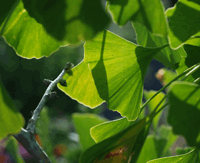
By Shellie Enteen, BA, LMT
Working with essential oils requires an understanding of the physiological properties, methods of delivery, safety issues such as skin sensitization and contraindication, as well as the "subtle" aspect which includes the effect on the mind, emotions and spirit. Once again, I invite and encourage those readers who have not seen my earlier columns to search the archives for basic information on methods and safe use of essential oils and a discussion of
subtle aromatherapy.
When it comes to pain relief, aromatherapy recognizes that there are different ways to approach. For example, there are specific essential oils recommended for headache pain if the headache is caused by stress, by overindulging, by withheld anger, and so on. In the same way, muscle or joint pain could require nerve sedation, warming through increased circulation, removing inflammation and/or toxins, or a combination of these and other aspects.
Massage therapists should be well-equipped to determine the physical cause and description of the client's pain, which makes selecting the right essence easy if you know its physiological properties.
Understanding the mental and emotional state of the client in regard to the pain or in their current life experience will add the ability to select essences based on the subtle properties. For example, a pain blend for someone who has had a sports injury would be different than one for someone going through a difficult divorce. The most effective blend addresses both physical and subtle influences. Topical application in massage or bath is suggested, but relief through inhaling diffused blends has also been reported. Essential oils have been seen to have an almost immediate effect on muscle tissue augmented by manipulation through massage.
Musculoskeletal pain can be effectively reduced through using analgesic, anti-inflammatory, anti-rheumatic, detoxifying, and rubefacient essential oils.
Analgesic Essential OilsGerman Chamomile (
Matricaria recutita), Roman Chamomile (
Anthemis nobilis), Eucalyptus (
Eucalyptus globulus ), Lavender (
Lavandula angustifolia), Sweet Marjoram (
Origanum majorana), Peppermint (
Mentha x piperita), Rosemary (
Rosmarinus officinalis), and Thyme (
Thymus vulgaris ct. linalool) are common analgesic essential oils. Turmeric (
Curcuma longa) is an essence more frequently used in the East. Earlier articles have explored the properties of the commonly used essences. Of these, Chamomile, Lavender and Marjoram are also a sedative, while Eucalyptus, Peppermint, Rosemary, and Thyme are considered stimulants.
A lesser known stimulant is Turmeric. A native of South Asia, Turmeric has been used for thousands of years as an herb in cooking and as medicine. The yellow powder is an ingredient in many curries. Current research indicates that Turmeric has a strong antioxidant property that makes it an herb that may prevent and assist disease and aging issues. It belongs to the ginger family and the powder and essential oil is obtained from the thick rhizome (root). In traditional Chinese and Indian medicine, Turmeric is used to treat flatulence, colic, abdominal pain, liver disorder, menstrual issues, hemorrhage, bruises, sores, and toothache as well as chest and shoulder pain. Because of its analgesic, anti-arthritis, anti-inflammatory, choleric, digestive, and rubefacient properties, aromatherapists use Turmeric for arthritis, rheumatism, digestive problems, and liver congestion.
Research has shown that Turmeric can stop the proliferation of laboratory strains of melanoma. (Read Farida Irani 2008 article "Turmeric" in
Aromatherapy Journal, the National Association for Holistic Aromatherapy (NAHA) e-Journal.) Turmeric is said to be non-toxic, non-irritant, and non-sensitizing.
Anti-inflammatory Essential OilsGerman Chamomile (
Matricaria recutita), Roman Chamomile (
Anthemis nobilis), Helichrysum (
Helichrysum italicum), also known as Everlasting, Turmeric (
Curcuma longa), and Yarrow (
Achillea millefolium) bring down swelling and are appropriate choices for osteo and rheumatoid arthritis, strains and sprains where inflammation is present. Both German Chamomile and Yarrow are deep blue.
Treatment Blends for Pain
Diluted into 1 oz carrier oil, based only on analgesic and anti-inflammatory physiological properties a treatment blend for inflamed, painful joints or strained muscles and back pain might include the following:
Inflamed, Painful JointsChamomile 1 drop
Marjoram 5 drops
Rosemary 3 drops
Turmeric 1 drop
Strained Muscles and Back PainLavender 6 drops
Eucalyptus 1 drop
Peppermint 2 drops
Helichrysum 1 drop
These blends contain both sedative and stimulant essences, but a greater number of drops of sedative oils create an overall relaxing effect.
This information is not intended to diagnose or take the place of professional healthcare. Please consult your health care practitioner if you are pregnant or have been diagnosed with any serious healthcare problems. Keep all aromatherapy products out of reach of children. Do not get near eyes. If essential oils get in the eyes, flush with water and seek proper healthcare advice. Before using essential oils and aromatherapy products please consult with a professional aromatherapist.This article first appeared in MassageToday:
http://www.massagetoday.com/mpacms/mt/home.php
 ACHS Director of Military Relations Kate Harmon and ACHS Dean of Admissions and Military Education Coordinator Tracey Miller pose with Erik Estrada at the DoD Worldwide Education Symposium.
ACHS Director of Military Relations Kate Harmon and ACHS Dean of Admissions and Military Education Coordinator Tracey Miller pose with Erik Estrada at the DoD Worldwide Education Symposium. 














